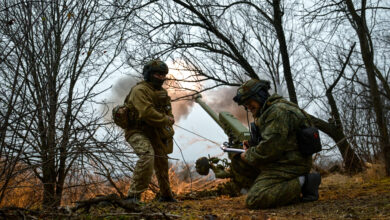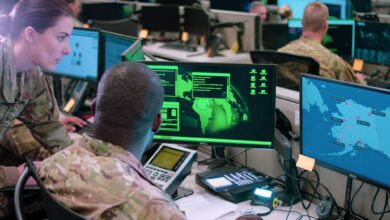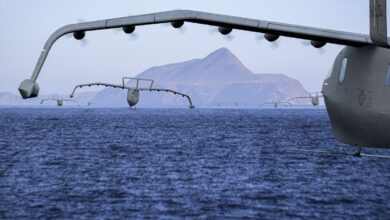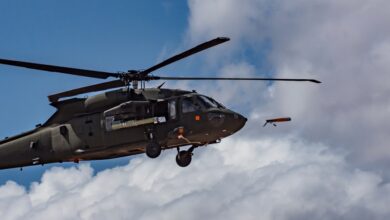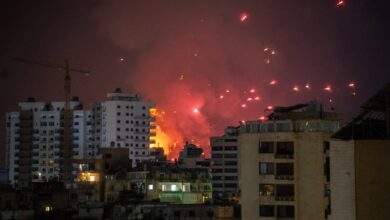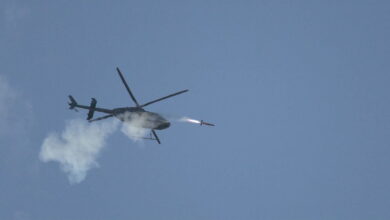
At the beginning of the Ukraine war, Marine Corps Commandant General David Berger confidently predicted the disastrous rout of Russian armored columns and Ukraine’s successful use of Hellfire missiles, justifying his having done away with the Marine Corps tank force.
The Ukrainians would disagree.
Tanks are the number one item on the Ukrainian military aid wish list. Not much further down is heavy engineer assault breaching capabilities against Russian fortifications — another aspect General Berger eliminated.
The Ukrainians also make skilled use of medium-range general artillery to enable ground maneuver. The only thing the Ukrainians don’t like about artillery is that they don’t have enough ammo at any given time. Again, although not eliminating conventional artillery, Berger drastically reduced the Corps’ inventory.
Tanks and Urban Warfare
As the Israeli ground incursion into Gaza generates analysis, the Marines might relearn some lessons from their 1990s urban warfare experiments in cities such as Fallujah and Ramadi in Iraq.
In Iraq, Marines made skillful use of tanks and Heavy Engineers in the urban canyons of the infamous Sunni Triangle in combined arms operations. The tanks had two uses.
They enabled urban maneuver from street to street by providing shelter for the infantry, and their armor-protected .50 caliber machine guns provided invaluable counter-sniper capability.
Meanwhile, Heavy Engineers provided rubble clearing and large-scale breaching that enabled the riflemen to move from building to building without exposing themselves.

Troop Numbers
Technology has not changed so much that Napoleon’s maxim “God is on the side of the big battalions” has become irrelevant. This is particularly true in the trenches along the Eastern Front in Ukraine and urban combat in Gaza.
So far, the Israelis have apparently not suffered heavy infantry casualties, but if they make good on their intention to reoccupy the Strip, they will face an urban insurgency requiring large numbers of troops.
The Marine Corps has reduced the number and size of its infantry battalions. Urban combat is casualty intense, although there is a limit to the number of troops that can be put on an urban street at one time. A place like Gaza could easily take three divisions to maintain an occupation.
These critical capabilities were given up to buy anti-ship missiles and other sea control capabilities to implement the Force Design (FD) 2030 concept, meant to deter or defeat Chinese aggression as a “stand-in” naval capability.
The question that has never adequately been answered is what will happen if a major conflict occurs somewhere outside the Western Pacific or South China Sea? Would the Marine Corps be prepared to play a significant role in a war such as in Ukraine or a major urban conflict such as Gaza, having given up the capabilities listed above?
I sincerely hope we don’t have to answer that question in the near term.

FD 2030
Many FD 2030 critics have noted that the classified war games used to “validate” the concept were a mile wide and an inch deep. The question of how the FD 2030 Marine Corps would support a major conflict in Europe or the Middle East was apparently never seriously considered.
Worse, the theater commanders of Central Command and the European Command were seemingly asleep at the wheel while the Marine Corps headed down the road to irrelevance.
This is not an academic matter. As this is being written, the 26th Marine Expeditionary Unit is operating near the Israel/Gaza region. The Americans in Gaza are begging for some sort of evacuation. If the administration is so foolish as to attempt to work with Hamas to try a Non-combatant Evacuation Operation, this would likely be another debacle.
As with throwing a football, three things could happen; two of them are bad.
First, Hamas can hold a perimeter and allow US citizens to be evacuated. This happy outcome is extremely unlikely considering the chaotic situation on the ground.
Second, thousands of Gazans will likely swarm the Marine perimeter, trying desperately to get on a ship, any ship, to get away. Imagine the CNN footage of Americans having to withdraw or risk being overwhelmed by the crowds, leaving the stranded American expats to watch US forces sail over the horizon.
Third – and worst – Islamic extremists not under Hamas control take the opportunity to mingle with said crowd and use suicide bombers and snipers to do what their counterparts did in Kabul (Oh, by the way, the Corps’ counter-sniper capability was also reduced under FD 2030).
In that case, the Marines would face the lose-lose situation of firing into the crowd and being accused of war crimes against civilians or of being overrun. I have been in that situation and would not wish it on anyone.
In 1995, the Marine Corps formed the core of a task force to evacuate UN personnel from Somalia. That was an undertaking similar in scope and scale to the situation in Gaza. It quickly assembled a brigade-sized force to do the job. That is three times the size of the force in the Mediterranean today. Due to deal-making with the Navy, the Marines could not put an amphibious force similar to that to sea today in anything like a timely manner.
The Marine Corps always prided itself on being ready to quickly put together a task-organized force to deal with any contingency anywhere in the world, at any time.
The FD 2030 Corps may have to deal with General Berger’s legacy sooner rather than later.
 Gary Anderson served as the Chief of Plans (G-5) of the Marine Corps Expeditionary Force responsible for the Indo-Pacific area.
Gary Anderson served as the Chief of Plans (G-5) of the Marine Corps Expeditionary Force responsible for the Indo-Pacific area.
He lectures on Alternative Analysis at the George Washington University’s Elliott School of International Affairs.
The views and opinions expressed here are those of the author and do not necessarily reflect the editorial position of The Defense Post.
The Defense Post aims to publish a wide range of high-quality opinion and analysis from a diverse array of people – do you want to send us yours? Click here to submit an op-ed.


